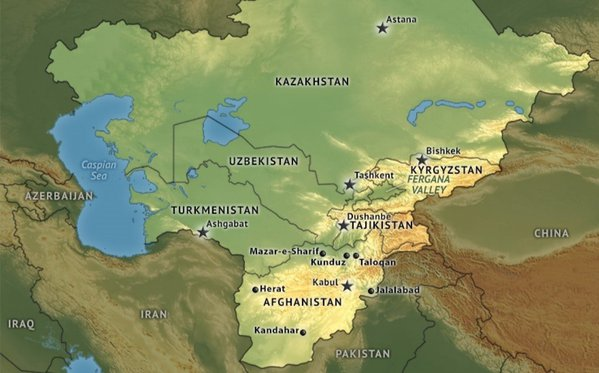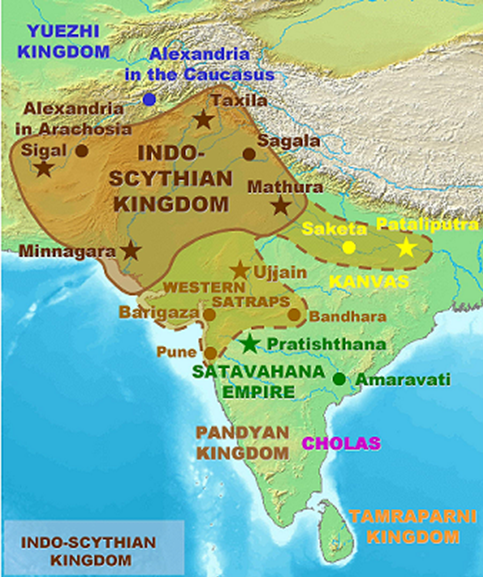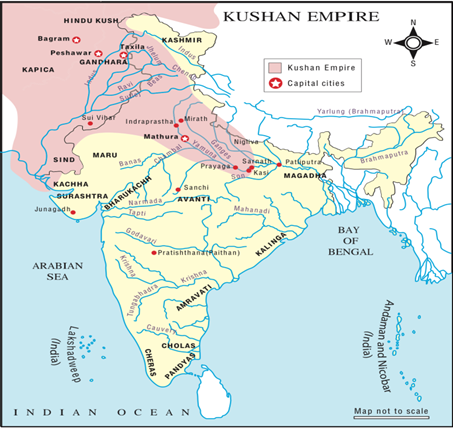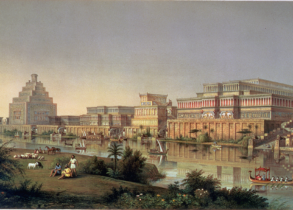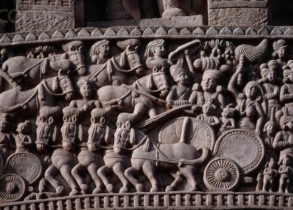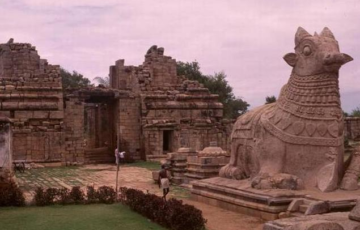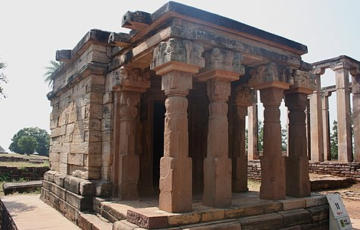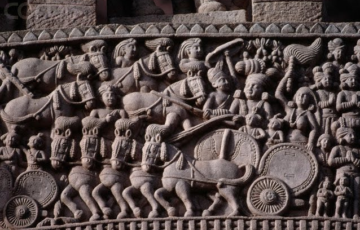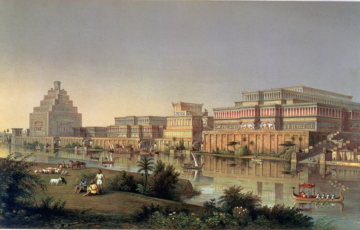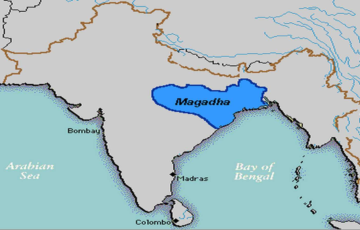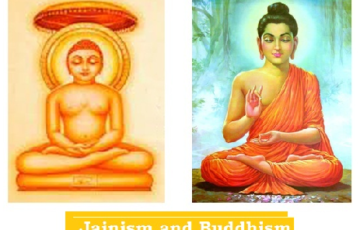CENTRAL ASIAN CONTACT
Introduction
The post-Mauryan era saw significant historical, political, and cultural transformations, notably with a transition in political power from Magadha to North-Western India.
- Following the decline of Mauryan rule, native dynasties such as the Shungas, Kanvas, and Satavahanas emerged to govern the eastern and central regions of India.
- In the north-western parts of India, dominance shifted to Central Asian ruling dynasties, among which the Kushans rose to prominence.
Early Greek Interaction with India
- Greek-Indian interaction commenced with Alexander’s invasion of north-western India between 327–325 BC.
- Selucus Nicator, a general under Alexander, extended his rule from Turkey to the Indus River.
- Chandragupta Maurya defeated Seleucus, leading to a marriage alliance between them.
- Bindusara, Mauryan emperor, maintained diplomatic relations with Antiochus of Syria.
- Asokan Rock Edict 13 enumerates five Yona/Yavana kings, reflecting close connections with the Greeks.
- Scholars suggest that the Mauryan Empire’s administrative structures were influenced by Persian and Greek administrative
- India exported luxury goods like ivory, pearls, indigo, spikenard (a fragrant oil from the Gangetic region), and malabathrum (cinnamon leaf).
Indo-Greek Kingdom
The Indo-Greek Kingdom, also referred to as the Indo-Bactrians or Yavana Kingdom:
- They held sway over the northwestern part of the Indian Subcontinent, encompassing regions of Afghanistan, Pakistan, and Iran.
- Indo-Greeks were pioneers in invading India, penetrating as far as Ayodhya (Saketa) and
Causes of the Indo-Greek Invasion
- The decline and fragmentation of the Seleucid Empire, starting around 250 BC, weakened its control over distant territories.
- Seleucid emperor Antiochus III’s movement towards the Kabul River resulted in the defeat of local Indian rulers like Subhagasena, facilitating the Indo-Greek invasion into India.
- The construction of the Great Wall of China led to a westward migration of Scythian tribes, who began encroaching upon Greek and Parthian territories.
- Consequently, the Bactrian Greeks were compelled to seek refuge in India.
Indo-Greek Coins
- Coinage served as a distinctive hallmark of the Indo-Greeks.
- They were first in minting gold coins.
- Indo-Greeks were the first to issue coins that could be unequivocally attributed to individual kings.
- These coins prominently featured the portrait of the reigning king on one side, accompanied by his name.
Important Rulers
| DEMETRIUS II (180 BC) | ● Demetrius II is believed to be the earliest documented Indo-Greek king.
● In 180 BC, he launched an invasion of India, possibly clashing with Pushyamitra Shunga. ● He expanded Bactrian rule southward beyond the Hindu Kush. ● Demetrius II issued bilingual square coins featuring Greek on the obverse and Kharosthi on the reverse. |
| MENANDER (165/145– 130 BC) | ● Menander is regarded as one of the most significant Indo-Greek rulers, controlling a vast territory in northwest India, from the Kabul and Indus river valleys to western Uttar Pradesh.
● His coins referred to him as “king” and “soter” (savior), emphasizing his role rather than conquest. ● Menander converted to Buddhism under Nagasena’s influence, with their discussions recorded in the Buddhist text “Milinda Panha.” ● He established his capital at Sakala (modern Sialkot, Pakistan). ● Although he successfully attacked Pataliputra, he failed to consolidate his conquest. ● King Kharavela of Kalinga, according to the Hathigumpha Inscription, was unable to halt his advance. |
| ANTIALCIDAS | ● He dispatched his envoy, Heliodorus, to the court of Bhagabhadra, where Heliodorus erected a pillar (Garuda-Dhvaja) in Vidisha.
● The capital was adorned with a figure of Garuda in honor of the deity Krishna. ● Later, Heliodorus embraced Vaishnavism. |
Arrival of Central Asian Tribes
The Indo-Greeks were displaced by nomadic tribes such as the Sakas (Scythians), Parthians (Pahlavis), and Kushanas (Yueh-chi or Yuezhi tribes from China), originating from Central Asia.
- This displacement resulted from a series of migrations and political changes in Central Asia.
- The Yueh-Chi, situated in the eastern part of Central Asia, were forced westward after the construction of the Great Wall of China, designed to safeguard Chinese settlements.
- The Yueh-Chi’s westward movement displaced the Sakas towards eastern Iran, where the Parthians had ascended to power following the collapse of the Seleucid empire.
- In 58 BC, Vonones established the independent Parthian kingdom in eastern Iran.
The Shakas / The Indo-Scythian Kingdom
- Pushed back from eastern Iran by the Parthian ruler Mithradates (188–123 BC), the Shakas migrated to northwestern India, settling between the Indus Valley and Saurashtra.
- Organized into five branches with distinct power centers: Afghanistan, Punjab, Mathura, Western India, and Upper Deccan.
- Maues, or Moa/Moga (20 BC to 22 AD), was the first Saka ruler in India.
- He initially occupied Gandhara.
- However, it was his successor, Azes, who ultimately overthrew the Indo-Greek kingdoms and expanded Shaka rule as far as Mathura.
Administration
- Provincial governors, known as Kshatrapas or Satraps, were appointed to oversee territories, many of whom gained significant autonomy, essentially becoming independent rulers.
- Rudradaman I (130–150 AD) was a notable Shaka Kshtrapa who governed various regions including Sindh, Gujarat, Konkan, Narmada Valley, Malwa, and Kathiawar.
- He undertook the restoration of the Sudarshana Lake in Kathiawar for irrigation purposes.
- An inscription in Junagadh (Gujarat) records his victory over the Satavahanas in battle.
- Rudradaman I was renowned for being the first to issue a lengthy inscription in Sanskrit, demonstrating his affinity for the language.
Society
- The Shakas adopted Hindu names and embraced Hindu religious beliefs. Their coins often depicted Hindu deities on one side.
- Patanjali, in his Mahabhasya, referred to the Shakas as ‘Anirvasita (pure) Shudras’.
Decline of Shakas
- Around 57-58 BC, the King of Ujjain expelled the Shakas from his territory, marking the beginning of the Vikrama Samvat era in 57 BC.
- In commemoration of this victory, he adopted the prestigious title Vikramaditya for the first time.
The Parthians (Pahlavis)
- Originally hailing from Iran, the Parthians migrated to India. They followed the Shakas in ruling over parts of the Indian subcontinent, and both groups are often referred to as Shaka-Pahlavas in ancient Indian Sanskrit texts.
- Compared to the Greeks and Shakas, the presence of Parthians in India was relatively limited.
- Gondophernes:
- He was a significant Parthian king during the 1st century AD.
- He displaced the Shakas and conquered Kabul in 43 AD, although he later lost control of it to the Kushanas.
The Kushanas
The Kushans were one of the five clans of the Yuechi tribe, also known as Yuechis or Tocharians. They succeeded the Parthians and Scythians in ruling parts of Central and South Asia.
Geographical Expanse:
- Originating from north Central Asia near China, they displaced the Shakas and established dominance in Bactria (North Afghanistan).
- Their empire stretched from the River Oxus (Amu Darya) to the Ganges, spanning Khorasan (Central Asia), Iran, Afghanistan, Pakistan, and northern India.
- It further expanded eastward into the Ganga valley and southward into the Malwa region, encompassing significant cities such as Varanasi, Kaushambi, Shravasti in Uttar Pradesh, and Sanchi in Madhya Pradesh.
- Bactria served as the focal point of this vast empire, evident in the use of the Bactrian language in Kanishka’s coins and inscriptions.
Dynasties within Kushanas
There were two successive Kushan dynasties
- The initial Kushan Dynasty was led by Kadphises I, who issued coins south of the Hindukush mountains and minted copper coins.
- Kadphises II, his successor, expanded the kingdom east of the Indus River and issued a significant quantity of gold coins.
- They ruled from about 50 AD
- Khujula Kadphises, the first Kushan king, conquered Afghanistan, succeeded by Wima Kadphises.
- These kings expanded their domain to Gandhara, Punjab, and as far east as the Ganga-Jumna doab up to Mathura, with Mathura serving as their second capital in India. (1st being Purushpura or Peshawar).
- The early Kushan kings minted gold coins with higher gold content than Gupta coins.
- The second Kushan Dynasty was established by Kanishka, who further extended Kushan power to upper India and the lower Indus basin.
Kanishka
- Son of Kadphises II, Kanishka was the most renowned Kushan king, overseeing the peak of the Kushan empire’s power.
- The Rabatak Inscription, located in modern Baghran province, Afghanistan, provides significant insights into Kanishka.
- It mentions his adoption of the title ‘Devputra’ and depicts him wearing a peaked helmet on some of his coins.
- Kanishka’s coins and a headless statue discovered near Mathura depict him clad in a belted tunic, with an overcoat and boots, reflecting his Central Asian heritage.
- He initiated an era around 78 AD, known as the Shaka era, which is employed in the Indian National calendar.
The Decline of the Kushan Empire
- In the mid-third century, the Sassanians from Iran surpassed the Kushan Empire in Afghanistan and regions west of the Indus River.
- With the empire’s decline, the satraps (provincial governors) established themselves as independent rulers, marking the fragmentation of Kushan authority.
Socio-Cultural Impact of Central Asian Contact
Polity:
- Feudal organization emerged as Central Asian rulers imposed their authority over native princes.
- The Shakas, along with the Parthians, introduced the Satrap system of government, dividing the empire into various satrapies, akin to the Achaemenid and Seleucid systems in Iran.
- Unusual practices such as hereditary dual rule emerged, where two kings ruled jointly, indicating a degree of decentralization.
- Evidence of father and son ruling jointly suggests a lesser degree of centralization.
- The practice of military governorship, possibly introduced by the Greeks, was adopted. These governors, known as Strategos, played a crucial role in maintaining rulers’ power over indigenous populations and blocking invasions from the northwest.
- Kushana rulers, depicted on coins, held titles like ‘king of kings’, ‘Caesar’, and ‘lord of all lands’, highlighting their collection of tributes from numerous small princes.
- They reinforced the divine origin of kingship by adopting titles such as ‘sons of God’ to legitimize royal authority.
Economy
- India received a significant influx of gold from the Altai mountains in Central Asia. Trade with the Roman Empire might have also contributed to the flow of gold into India.
- The Indo-Greeks were the first rulers in India to widely issue gold coins, which were of exceptional quality and adhered to the weight standards of Roman coins.
- Kushan copper coins in India mimicked Roman coins.
- Greek coins were superior in shape and stamping, representing an advancement over punch-marked coins.
- The Kushans exerted control over the Silk Route, a vital trade artery spanning China, Central Asia, Afghanistan, Iran, and Western Asia.
- Toll collection along this route constituted a significant source of revenue.
- The Kushans promoted agriculture, with early evidence of large-scale irrigation projects in regions such as Pakistan, Afghanistan, and western Central Asia.
Trade
- Artefacts discovered along the Karakoram Highway indicate that this route was utilized by Buddhist monks traveling to China to propagate Buddhism.
- Merchants soon followed the missionaries, turning this route into a crucial commercial corridor for importing Chinese silk and horses from the West into India.
- The rock of Hunza, located on the Karakoram Highway project, mentions the first two Kadphises and Kusanadevaputra Kaniska.
- This inscription corroborates that Kanishka’s empire spanned from Central Asia to eastern India.
- Buddhist texts record Kanishka’s conquests of regions such as Magadha, Kashmir, and Khotan in Sinkiang.
Improved Warfare
- The Shakas and Kushans revolutionized warfare by introducing superior cavalry tactics and widespread use of riding horses.
- They also introduced various attire such as turbans, tunics, trousers, long coats, caps, helmets, and boots for warriors, providing them with a distinct advantage in warfare across regions including Iran, Afghanistan, Pakistan, and India.
Society
- Central Asian rulers gradually assimilated into Indian society, adopting Indian customs and traditions.
- They were integrated as a warrior class, often identified as Kshatriyas.
- However, their status as Kshatriyas was considered secondary, as they were perceived to have deviated from their traditional duties, as explained by Manu.
Religion
- Kushan rulers displayed reverence towards various deities including Shiva, Vishnu, and
- Images of Shiva and Vishnu were depicted on Kushan coins, with some rulers explicitly worshipping Vishnu, such as the Kushan ruler Vasudeva, a synonym for Krishna.
- The Origin of Mahayana Buddhism:
- Initially, Buddhism in its original form was perceived as too puritanical and abstract.
- However, with increased trade and the arrival of Central Asians, Buddhism evolved into Mahayana, which emphasized the worship of Buddha in image form.
- Kanishka and Buddhism
- He hosted the fourth Buddhist council at Kundalvana in Kashmir, conducted in
- This council finalized the doctrines of Mahayana Buddhism and preserved Buddhist literature in copper inscriptions, which were then enclosed in a stupa to honor the Buddha’s teachings.
- He supported missions dispatched to China for propagating Buddhism.
- Kanishka was a patron of Buddhist philosophers such as Asvaghosha, Parsva, Vasumitra, and the renowned Buddhist teacher Nagarjuna.
- He commissioned the construction of a colossal stupa in Peshawar (Purushpur).
- Kanishka’s coins reflected his religious tolerance, featuring a blend of Indian, Greek, and Zoroastrian
- He hosted the fourth Buddhist council at Kundalvana in Kashmir, conducted in
Art and Architecture
- Art experienced a renaissance partly due to royal support and partly due to the rise of Mahayana Buddhism, which permitted the depiction of the Buddha in human form.
- The Kushan empire facilitated the convergence of artisans trained in various traditions, leading to the emergence of distinct art schools such as Gandhara and Mathura.
- The influence of Gandhara art extended to Mathura, influencing the sculpture of Buddha and the renowned headless statue of Kanishka discovered in Mathura.
- Distinctive plain and polished redware pottery was prevalent during this period.
Science and Technology
- Greek terms pertaining to planetary movements were assimilated into Sanskrit texts, indicating an exchange of scientific knowledge between Greek and Indian scholars.
- Charaka and Sushruta were renowned Indian scholars in the fields of medicine and surgery, respectively. Charaka’s Charakasamhita contained a wealth of information on medicinal plants and herbs.
- During this period, significant advancements were made in glass-making, influenced by foreign ideas and practices.
Language and Literature of Central Asian Rulers
- Central Asian rulers were patrons of Sanskrit literature.
- The earliest example of the Kavya style, written in pure Sanskrit, was discovered in the Junagarh inscription of Rudraman in Kathiawar around 150 AD.
- Ashvaghosha, a prominent figure of this era, composed the first Sanskrit play, Sariputraprakarana, along with other notable works such as Buddhacharita and Saundarananda.
- Bhasa, a renowned dramatist, possibly belonged to this period. His work Urubhanga narrates the story of Duryodhana during and after his battle with Bhima.
- Hindu treatises such as Manusmriti, Vatsyayana’s Kamasutra, and Kautilya’s Arthasastra reached their final form by the second century AD.
- The advent of Mahayana Buddhism led to the composition of Avadanas, texts written in a Buddhist-hybrid Sanskrit to convey Mahayana teachings.
- Examples of this genre include Mahavastu and the Divyavadana.
- Indian theatre likely borrowed elements from this period, including indoor and outdoor theaters, curtains (Yavanika), and a rest house for actresses.
UPSC PREVIOUS YEAR QUESTIONS
1. The practice of military governship was first introduced in India by the: [UPSC CSE 2000]
1. Greeks
2. Shakas
3. Parthians
4. Mughals
Statement I: Sculptures of the Gandhara School stylistically are typically linked to the Greco-Roman and the Parthian art of Iran.
Statement II: The earliest stone Buddha images in the Swat Valley pre-dated the Kushana period, which suggests that certain iconographic conventions were already well-established in the pre-Kushana period. [UPSC CDS I 2013]
Select the correct answer from below:
a) Both the statements are individually true and statements II is correct explanation of statement I
b) Both statements are individually true and statements II is not correct explanation of statement I
c) Statement I is true but statement II is false
d) Statement I is false but statement II is true
| IMPORTANT FACTS RELATED TO THE CHAPTER
● Ashwaka was a frontier republic during Alexander’s invasion, with Massaga as its capital. According to Greek accounts, the women of Ashwaka took up arms against Alexander after many men were killed in battle. ○ Alexander reportedly retaliated by killing all the women of the town. ● The realm of Puru (Porus) was situated between the Jhelum and Chenab rivers. Although Alexander defeated Porus on the banks of the Jhelum, he admired Porus’s bravery and eventually befriended him. Alexander returned Porus’s state to him and even gifted him additional territories. ● Deimachus did not accompany Alexander to India. ○ Instead, Strabo records that the Seleucid emperor Antiochus sent his ambassador, Deimachus, to the court of Bindusara. ● The coinage of Karddamaka rulers can be categorized into two types: silver coins, which were common during the rule of the Kshatrapas, and potin coins. Karddamaka ruler Chastana issued both silver and copper coins. ● The regularization of gold coins in India is attributed to Indo-Greek kings. ● Strato II was known for issuing lead coins. ● Agathocles, a Greco-Bactrian king who reigned from around 190 BC to 180 BC, held Paropamisadae, a satrapy between Bactria and India. ○ He introduced bilingual legends (in Greek and Brahmi) on his coins, and his coinage was extensive. ○ He was the first Greco-Bactrian ruler to depict both Sankarshana (Balram) and Vasudev on his silver coins. ● The practice of child marriage began during the Kushana Period in the 1st century AD. This period also saw the abolition of “Upanayana” for females and the prevalence of child marriage, which marginalized them within society. Girls were often married between the ages of 8 and 10. ● Bamiyan, Afghanistan, was renowned for its Buddha statues carved into the hills. However, the Taliban destroyed these statues. ● Justinian is renowned for his contributions to the development of Roman law. His Corpus Juris Civilis remains the basis of civil law in many modern states. Justinian played a significant role in the complete amendment of Roman Law. |

